Some statistics about Vincennes' half marathon (2022)
In 2022, I ran Vincennes’ half marathon with a friend.
After the race, I was curious to know how I did compared to other participants. Fortunately, the results were made available online at https://protiming.fr/Results/runningR/6294/14/.
I figured out a way of paginating through the results after having clicked a few buttons. Adding page:N at the end of the URL seemed to be good enough.

When the page number exceedes the last one, the website returns a 404 HTTP status code so it’s easy to know when to stop iterating.
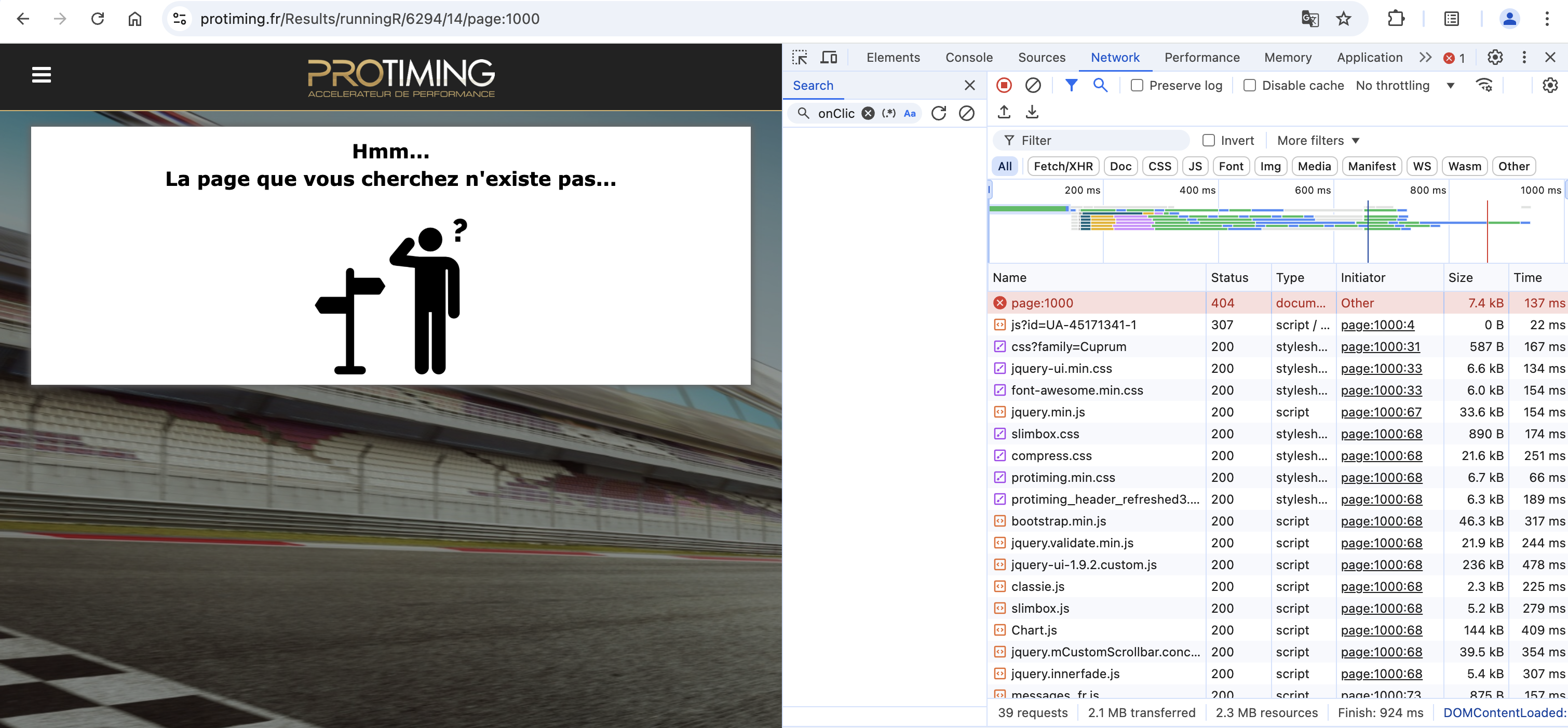
After spending some time inspecting the page source code, I came up with the following Python script:
import requests
import json
from bs4 import BeautifulSoup
URL = "https://protiming.fr/Results/runningR/6294/14/page:{}"
DATASET = "data.json"
def get_dataset():
times = []
for page in range(1, 156):
response = requests.get(URL.format(page))
soup = BeautifulSoup(response.text, features="html.parser")
for row in soup.find(id="results").find("tbody").find_all("tr"):
times.append({
"time": sum(x * int(t) for x, t in zip([3600, 60, 1], row.find("td", {"class": "real_time_data"}).text.split(":"))),
"category": row.find_all("td")[5].text.strip().lower(),
})
return times
def main():
data = get_dataset()
with open(DATASET, "w") as f:
json.dump(data, f)
if __name__ == "__main__":
main()
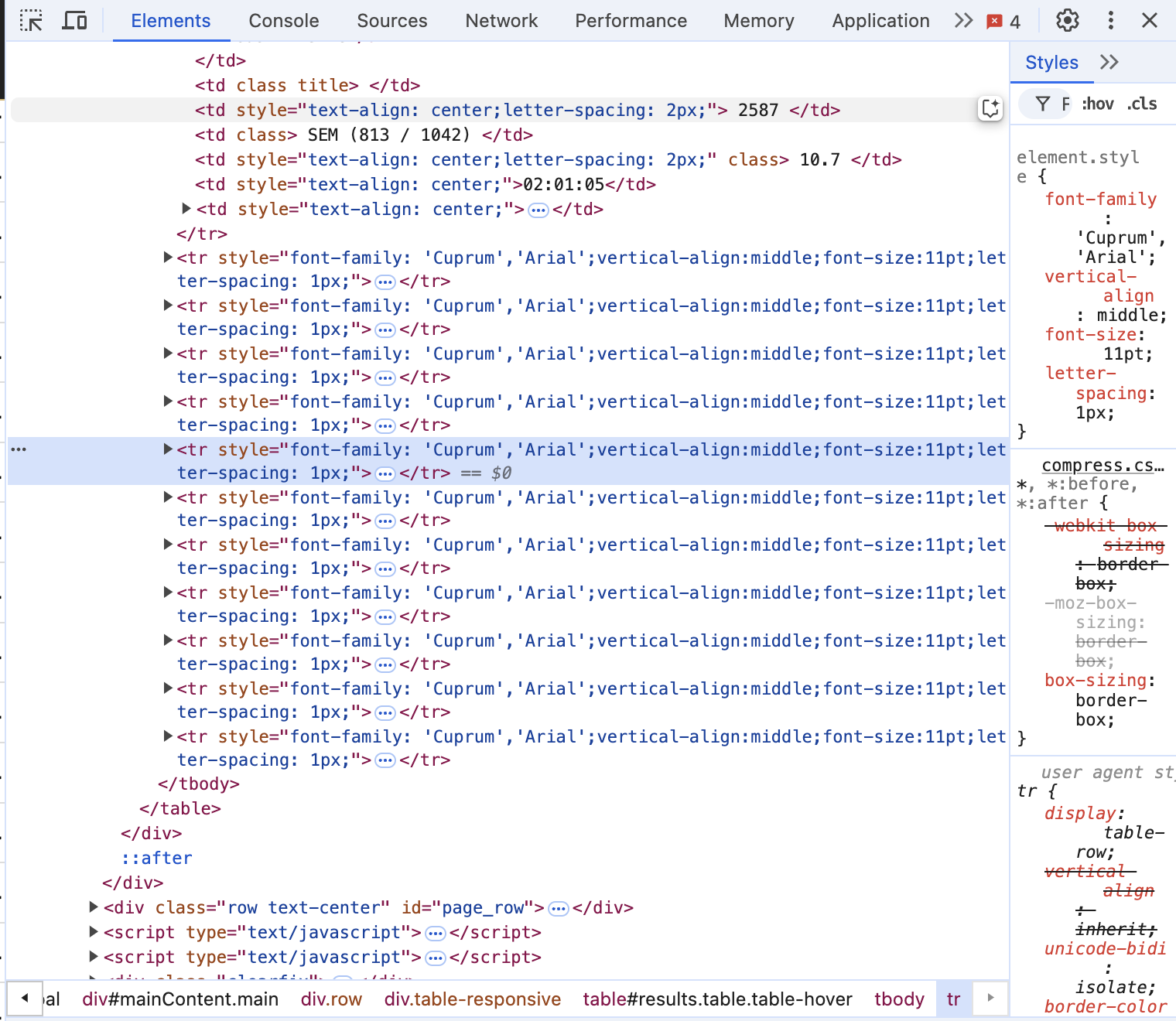
I used the famous BeautifulSoup Python library to extract HTML tags of interest and saved the whole results as a JSON with the following format:
[
{
"time": 4209, // in seconds
"category": "m0m (1 / 454)"
},
[...]
]
I only cared about people’s time and their category. This latest field is a string formatted in a way you can extract the sex and age of the participant. For instance, when the second character is a m, the record is for a male, and similarly, f indicates a female.
Once I had the dataset locally (I did not want to DOS the website by scrapping it too often), I could start playing with it.
I was mostly interested in drawing the general histogram of times, and then one for each sex. I ended up with the following code:
import json
import matplotlib.pyplot as plt
DATASET = "data.json"
def load_dataset():
with open(DATASET, "r") as f:
return json.load(f)
def group_by_sex(data):
women = []
men = []
for datum in data:
if datum["category"][2] == "f":
women.append(datum)
elif datum["category"][2] == "m":
men.append(datum)
return women, men
def display_histogram(data, bins=200):
plt.hist([point["time"] for point in data], bins=bins)
plt.show()
def main():
data = load_dataset()
display_histogram(data)
groups = group_by_sex(data)
for group in groups:
display_histogram(group)
if __name__ == "__main__":
main()
This allowed to generate the following histograms: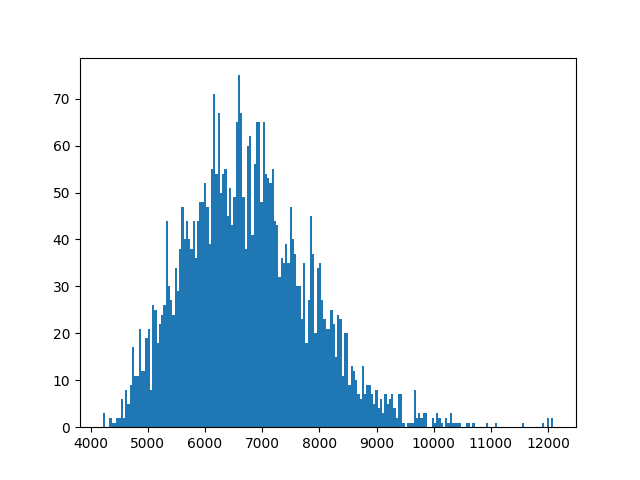
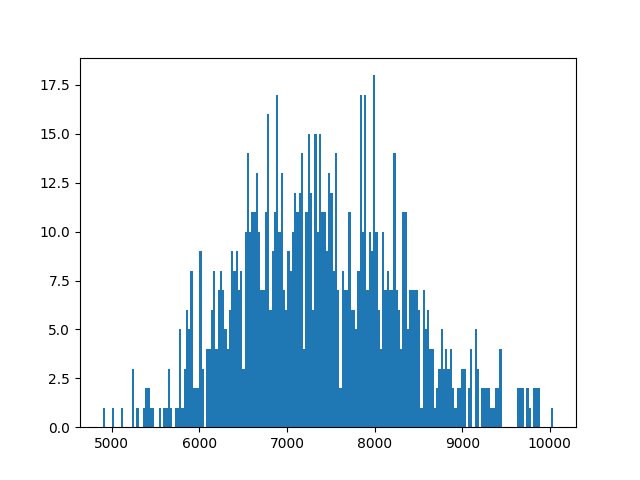
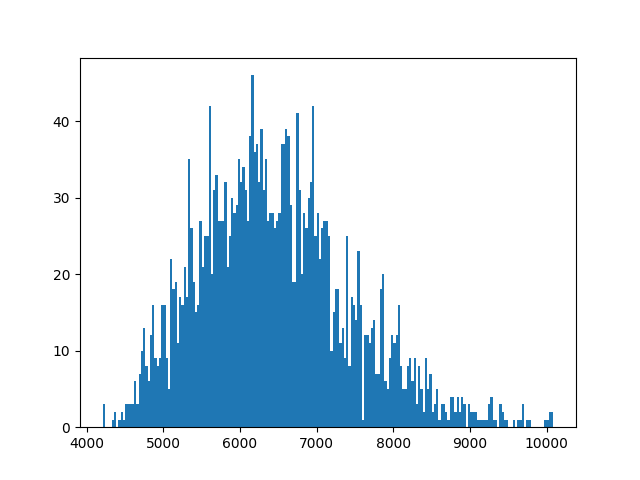
With my time (1:46:56, therefore 6416 seconds) it ended up I’m pretty average ˆˆ
See you next time 👋